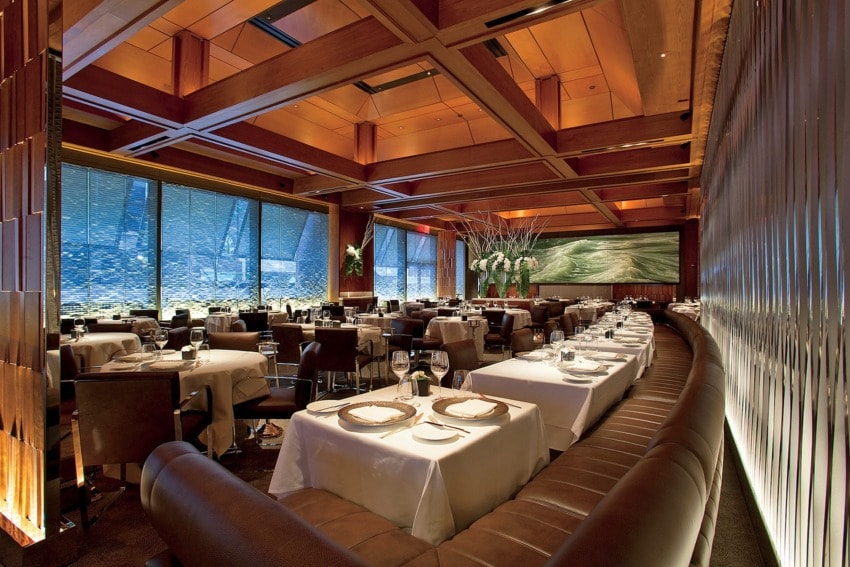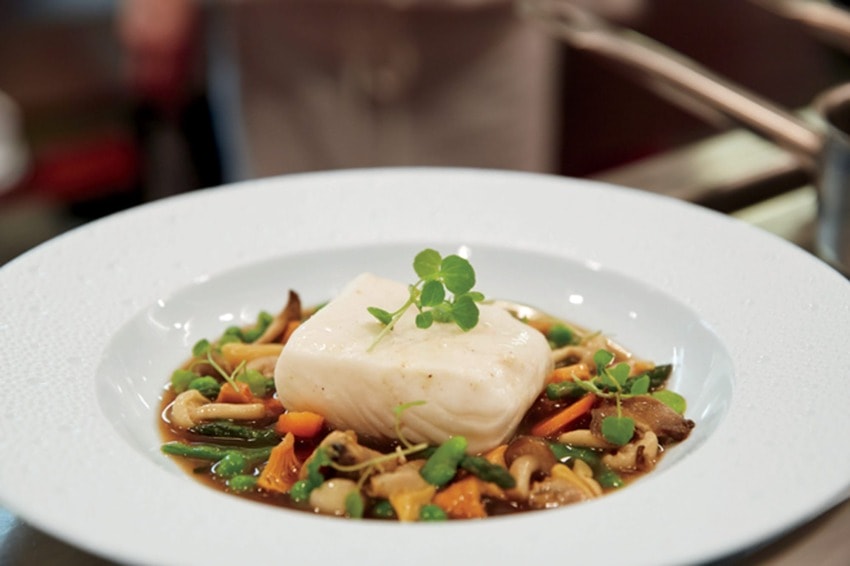Celebrity Chef Eric Ripert Dishes to Hal Rubenstein
The acclaimed owner of Le Bernardin chats about how food is akin to art, what inspires him, and shares a mouth-watering short rib recipe

Within five minutes of meeting him, you will have a crush—a serious crush—on Eric Ripert. Doesn’t matter if you’re a woman, a man, if you’re young, old, are a rabid foodie, or hold VIP status at the Olive Garden. Nor is it because Le Bernardin’s chef and co-owner (with founder Maguy Le Coze) has won six James Beard Awards, has held three Michelin stars, and heads the only kitchen in the history of the New York Times to maintain four-star status for more than three decades. Add to these accolades an Emmy, France’s Legion d’Honneur, his cool new Aldo Sohm Wine Bar, and his current best-selling autobiography 32 Yolks: From My Mother’s Table to Working the Line.

Impressive as that all may be, it’s not why you sit there suppressing a swoon. Despite his light-blue-eyed, full-lipped, handsome face, framed by wavy crests of silver hair, and the lure of his French-accented phone sex voice, Ripert is nearly oblivious to his physical appeal, which only makes him that much more irresistible. Next, turn starry-eyed when Ripert speaks about cooking, and those pale eyes start to gleam as he taps into his unwavering, still happily awestruck fervor for the most fragile of the arts, analyzing his singular, universally lauded talent with mesmerizing clarity and near visionary illumination. He makes you hungry, for… oh, so many things, but you’ll have to settle for a meal. At least, it will be a spectacular one.
Van Gogh’s Sunflowers, Michelangelo’s David, Shakespeare’s King Lear, Beethoven’s Symphony No. 5. —We’re conditioned to think of art as works that are everlasting. Can food be art if it has no permanence?
Food is even a more rare art form because it is a flash of creativity with a shelf life of only a few seconds. Like a painter or sculptor, I have a vision. Like them, I get inspired to create. But while those artists reach for tools that will bring about something that will remain fixed, my tools—flavors, smells, tastes—are intangible, subjective, and ever-changing, and used to bring about an ecstatic sensation that will almost instantly vanish, which in some ways makes my work even more interpretive, mysterious, and personal.
What are you expressing?
Cooking celebrates my being in New York, an incredible city that synthesizes cultures from around the world. And I do it best by creating dishes that I hope will become popular, maybe even desirable, with elements that are, by definition, perishable. When a painter casts a stroke of tempura, it remains. But the composition of food always changes. I craft a dish with precision, but I know that once I bake or roast it for two hours, it will become something else. So there is a great deal of magic built into the cooking.
Unlike an artist’s studio, kitchens are not the most hospitable of work environments because of the heat, because you are creating on the clock, and yet when you speak, cooking sounds more like a mission than a way to work.
For me, it is a sacred art. I cook as a spiritual experience, because it connects me to different parts of life—to the animals, the earth. You will laugh but I find myself talking to carrots even if they can’t hear what I say to them.
Did you always feel this way?
No. Though I’ve always loved food, I had to discover this. I was originally attracted for the wrong reason and that’s because I love to eat. But you can’t play Chopin simply because you like to listen to Chopin. You have to learn how. No one is born with knife skills. Phase one of learning to cook is craftsmanship, and it takes a minimum of 10 years just to learn the techniques, the endurance, the rigor, and the discipline so that you can create food that is harmonious and original, and do it over and over again. And then it takes even more to find your style, and years more to adapt from one style to the next.

With universal acclaim, why risk changing your way of cooking?
Picasso had a blue period, a rose period, and then a Cubist one. Chefs are no different.
What inspires you to make changes?
My process is not that organized. I don’t go after prescribed goals. I am very Zen and wait for flavors to hit me. It could be the first day of fall and I get a sensation in my taste buds, a reminder of an amazing tingling sensation I experienced tasting dishes in a rural village in China’s Szechuan province. Or I could be on a plane, and have a vision of a basil plant I saw in South America. It’s not totally random. I don’t flash on tomatoes and peaches in January. I don’t envision stews in August. But I can’t really explain it. It’s a kind of happy possession. Then I apply these flashes to the 100 or so notes I take during a season, check quality and availability, and out of all this, maybe 20 dishes will wind up being released to the public.
How do you decide?
Simple. There are only two kinds of food—good food and bad food.
Who determines that—you or your guests dining at Le Bernardin?
Some chefs have a very good sense of hospitality. They are mindful of customer’s tastes. I could care less. What matters is that I love it. I may have too good an ego, but I have to trust that the client will love what I am doing because I am putting my knowledge, my soul, my experience, and all my talent in the dish.
So you don’t care what your customers think?
I said I never think about the client in the kitchen. The Le Bernardin experience is something totally different, however. When guests are in my dining room, of course I care about their comfort, their treatment, their excitement, satisfaction, and surprise. People don’t come here to nourish themselves. For that you have neighborhood restaurants. They are coming here for an experience. So, when I am creating, I have to be very selfish, otherwise, how can I create something they could never imagine?